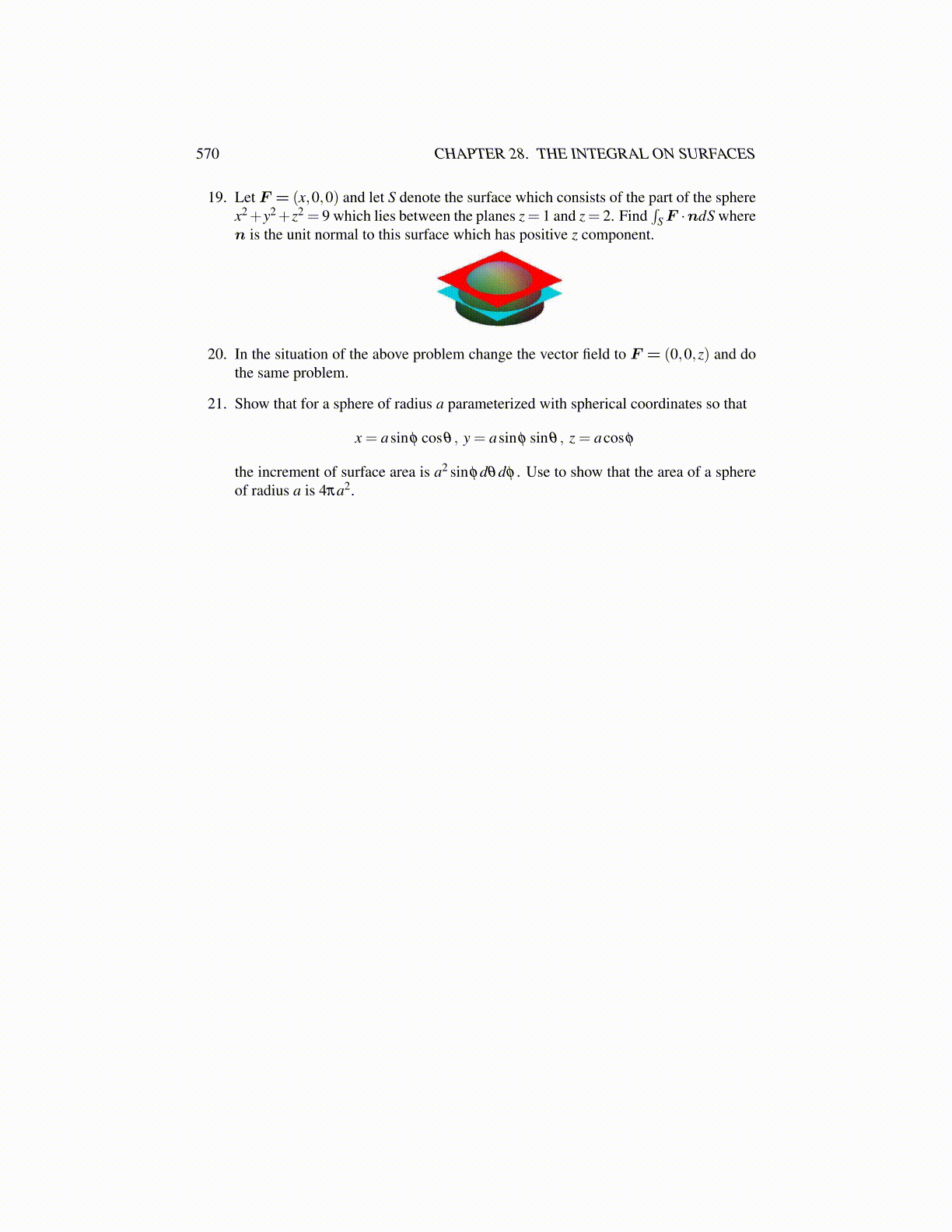
570 CHAPTER 29. CALCULUS OF VECTOR FIELDS
Lemma 29.1.4 Suppose h and ∂h∂x are continuous on the rectangle R = [c,d]× [a,b].
Then 29.2 holds.
Proof: Let ∆x be such that x,x+∆x are both in [c,d]. By Theorem 15.12.4 on Page 323there exists δ > 0 such that if |(x, t)− (x1, t1)|< δ , then∣∣∣∣∂h
∂x(x, t)− ∂h
∂x(x1, t1)
∣∣∣∣< ε
b−a.
Let |∆x|< δ . Then ∣∣∣∣∫ b
a
h(x+∆x, t)−h(x, t)∆x
dt −∫ b
a
∂h∂x
(x, t) dt∣∣∣∣
≤∫ b
a
∣∣∣∣h(x+∆x, t)−h(x, t)∆x
− ∂h∂x
(x, t)∣∣∣∣dt
=∫ b
a
∣∣∣∣∂h(x+θ t∆x)∂x
− ∂h∂x
(x, t)∣∣∣∣dt <
∫ b
a
ε
b−adt = ε.
Here θ t is a number between 0 and 1 and going from the second to the third line is anapplication of the mean value theorem.
The second formula of Theorem 29.1.3 states ∇×∇φ = 0. This suggests the followingquestion: Suppose ∇×f = 0, does it follow there exists φ , a scalar field such that ∇φ = f?The answer to this is often yes and a theorem will be given and proved after the presentationof Stokes’ theorem. This scalar field φ , is called a scalar potential for f .
29.1.3 The Weak Maximum Principle
There is also a fundamental result having great significance which involves ∇2 called the
maximum principle. This principle says that if ∇2u ≥ 0 on a bounded open set U , then u
achieves its maximum value on the boundary of U .
Theorem 29.1.5 Let U be a bounded open set in Rp and suppose
u ∈C2 (U)∩C(U)
such that ∇2u ≥ 0 in U. Then letting ∂U =U \U, it follows that
max{
u(x) : x ∈U}= max{u(x) : x ∈ ∂U} .
Proof: If this is not so, there exists x0 ∈U such that
u(x0)> max{u(x) : x ∈ ∂U} ≡ M
Since U is bounded, there exists ε > 0 such that
u(x0)> max{
u(x)+ ε |x|2 : x ∈ ∂U}.
Therefore, u(x)+ ε |x|2 also has its maximum in U because for ε small enough,
u(x0)+ ε |x0|2 > u(x0)> max{
u(x)+ ε |x|2 : x ∈ ∂U}